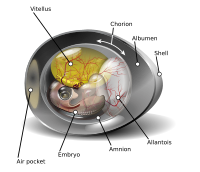
Heat transfer modeling and analysis of air-layer integrated radiant cooling unit
Sign Up to like & getrecommendations! Published in 2021 at "Applied Thermal Engineering"
DOI: 10.1016/j.applthermaleng.2021.117086
Abstract: Abstract Air-layer Integrated Radiant Cooling Unit (AIRCU) was proposed in 1963, which was characterized by the use of an infrared-radiation transparent (IRT) membrane to separate the unit’s radiant cooling surface from its external air-contact surface.… read more here.
Keywords: radiant cooling; air layer; unit; air ... See more keywords

Numerical and experimental investigation of a compound parabolic concentrator-capillary tube solar collector
Sign Up to like & getrecommendations! Published in 2020 at "Energy Conversion and Management"
DOI: 10.1016/j.enconman.2019.112218
Abstract: Abstract The paper reports numerical and experimental investigation of a compound parabolic concentrator-capillary tube solar collector (CPC-CSC). The capillary tube having an outer diameter 4 mm is used as the absorber, which reduces the size of… read more here.
Keywords: air layer; capillary tube; collector; solar collector ... See more keywords

Numerical simulation of air layer morphology on flat bottom plate with air cavity and evaluation of the drag reduction effect
Sign Up to like & getrecommendations! Published in 2019 at "International Journal of Naval Architecture and Ocean Engineering"
DOI: 10.1016/j.ijnaoe.2018.09.005
Abstract: Abstract To investigate the morphology characteristics of air layer in the air cavity, a numerical method with the combination of RANS equations and VOF two-phase-flow model is proposed for a plate with air cavity. Based… read more here.
Keywords: air cavity; air; air layer; morphology ... See more keywords

Graphene oxide supported Yolk - Shell ZnS/Ni3S4 with the adjustable air layer for high performance of electromagnetic wave absorber.
Sign Up to like & getrecommendations! Published in 2022 at "Journal of colloid and interface science"
DOI: 10.1016/j.jcis.2022.03.005
Abstract: Yolk-shell structure materials with the light weight, excellent impedance matching and electromagnetic wave (EMW) loss ability were widely used in the field of absorbing materials. However, the previous researches on this kind of structure always… read more here.
Keywords: air layer; yolk shell; structure;

The Kaye effect: New experiments and a mechanistic explanation
Sign Up to like & getrecommendations! Published in 2019 at "Journal of Non-Newtonian Fluid Mechanics"
DOI: 10.1016/j.jnnfm.2019.104165
Abstract: Abstract The Kaye effect is a phenomenon whereby a jet of fluid poured onto a surface appears to leap on impact, rather than stagnate or coil as expected. Since it was first described in 1963,… read more here.
Keywords: explanation; effect new; effect; kaye effect ... See more keywords

Maintenance of air layer and drag reduction on superhydrophobic surface
Sign Up to like & getrecommendations! Published in 2017 at "Ocean Engineering"
DOI: 10.1016/j.oceaneng.2016.11.028
Abstract: Abstract Hydrophobic surface for drag reduction on marine vehicles and structures has been proposed for many years. However, the drag reduction effect has been found to be unstable under high flow speed/pressure conditions because of… read more here.
Keywords: air; air layer; drag reduction; surface ... See more keywords

On multi-point gas injection to form an air layer for frictional drag reduction
Sign Up to like & getrecommendations! Published in 2018 at "Ocean Engineering"
DOI: 10.1016/j.oceaneng.2017.10.041
Abstract: Abstract Air layer drag reduction has been shown to be a feasible drag reducing technique at the laboratory and at full ship scales. In most studies, the air layers have been generated via gas injection… read more here.
Keywords: gas injection; gas; drag reduction; injection ... See more keywords

Numerical study of the effect of ship attitude on the perform of ship with air injection in bottom cavity
Sign Up to like & getrecommendations! Published in 2019 at "Ocean Engineering"
DOI: 10.1016/j.oceaneng.2019.106119
Abstract: Abstract Air lubrication by means of a bottom cavity is a promising way for ship drag reduction. The characteristics of air layer under the bottom cavity and effect of drag reduction are sensitive to the… read more here.
Keywords: ship; air; air layer; bottom cavity ... See more keywords

Robust Underwater Air Layer Retention and Restoration on Salvinia-Inspired Self-Grown Heterogeneous Architectures.
Sign Up to like & getrecommendations! Published in 2022 at "ACS nano"
DOI: 10.1021/acsnano.1c09669
Abstract: Salvinia's long-term underwater air layer retention ability has inspired researchers to develop artificial microstructures. However, Salvinia has an exquisite combination of a complicated hollow structure and heterogeneous chemical properties, which makes artificial reproduction beyond the… read more here.
Keywords: restoration; retention; air; underwater air ... See more keywords

The challenges, achievements and applications of submersible superhydrophobic materials.
Sign Up to like & getrecommendations! Published in 2021 at "Chemical Society reviews"
DOI: 10.1039/d0cs01056a
Abstract: Superhydrophobic materials have been widely reported throughout the scientific literature. Their properties originate from a highly rough morphology and inherently water repellent surface chemistry. Despite promising an array of functionalities, these materials have seen limited… read more here.
Keywords: water; air; superhydrophobic materials; air layer ... See more keywords

Reliability of PEA Measurement in Presence of an Air Void Defect
Sign Up to like & getrecommendations! Published in 2020 at "Energies"
DOI: 10.3390/en13215652
Abstract: This paper deals with the reliability of the Pulsed Electro-Acoustic (PEA) technique in the case of a specimen containing an air layer. The first approach to this study has been proposed by the authors in… read more here.
Keywords: air; air layer; reliability; pea cell ... See more keywords